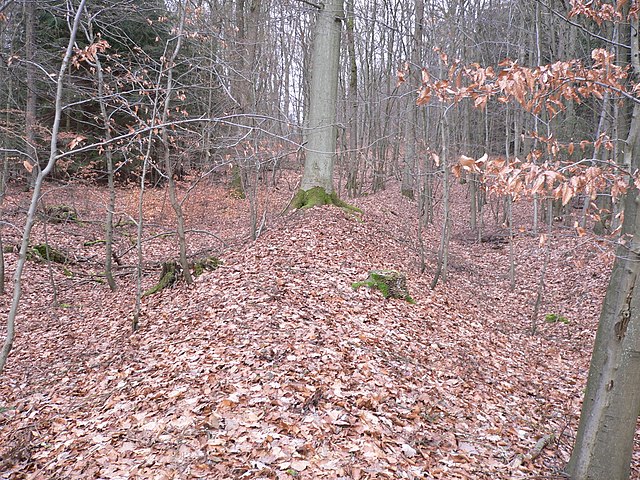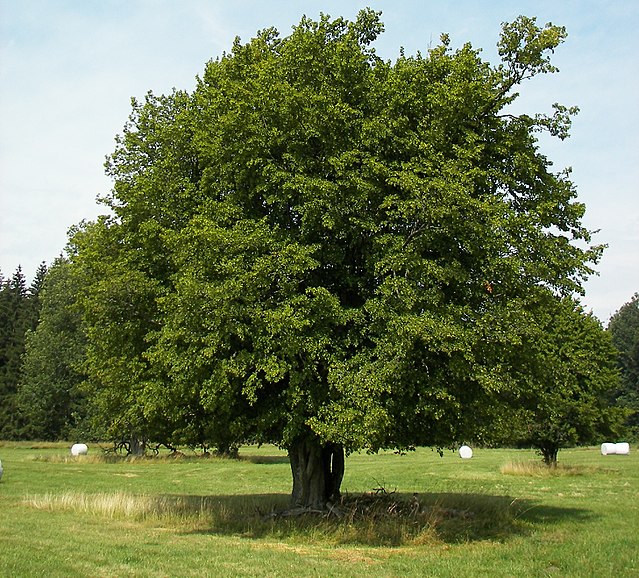The terms landwehr, landgraben and landhege refer to border demarcations or border defences and enclosures in Central Europe that were either built by settlements with the right of enclosure or to mark and defend entire territories. These measures, usually comprising earthworks or dykes as well as ditches and impenetrable lines of hedging, for protecting towns and villages date mainly to the High and Late Middle Ages and consist, in some cases, of systems over a hundred kilometres long. Comparable earthworks have been recorded since Antiquity. The Roman limes are the best known examples of earlier landwehrs. The Danewerk is another example of this type of barrier.
The Frankfurt Landwehr around the city, between 1712 and 1714 (copperplate by Johann Baptist Homann, regional boundaries corrected by Friedrich Bothe)
Letzi in Näfels, Switzerland
Middle Hessian Landheegen: embankment of the Innenheege near Wommelshausen (Bad Endbach
Banks and ditches of the Kleve Landwehr
Carpinus betulus, the European or common hornbeam, is a species of tree in the birch family Betulaceae, native to Western Asia and central, eastern, and southern Europe, including southern England. It requires a warm climate for good growth, and occurs only at elevations up to 1,000 metres (3,281 ft). It grows in mixed stands with oak, and in some areas beech, and is also a common tree in scree forests. Hornbeam was also known as yoke elm.
Carpinus betulus
Hornbeam catkins
Bark of a mature tree
Old hornbeam coppice stools left uncut for at least 100 years. Coldfall Wood, London








